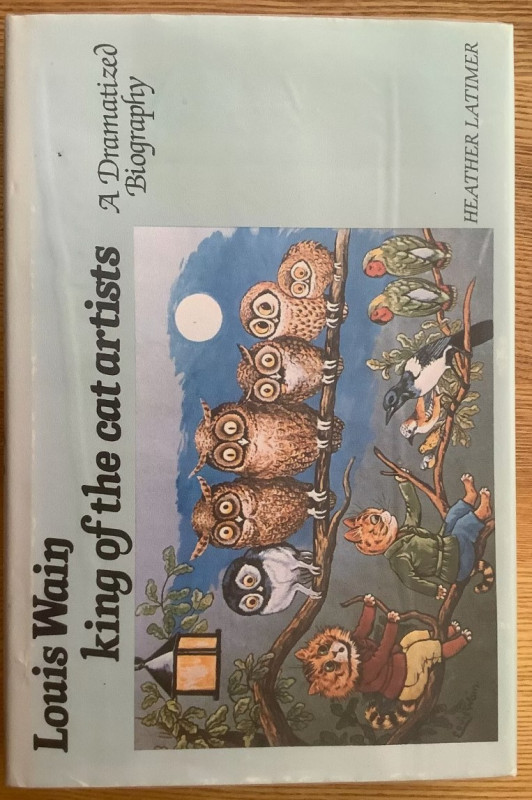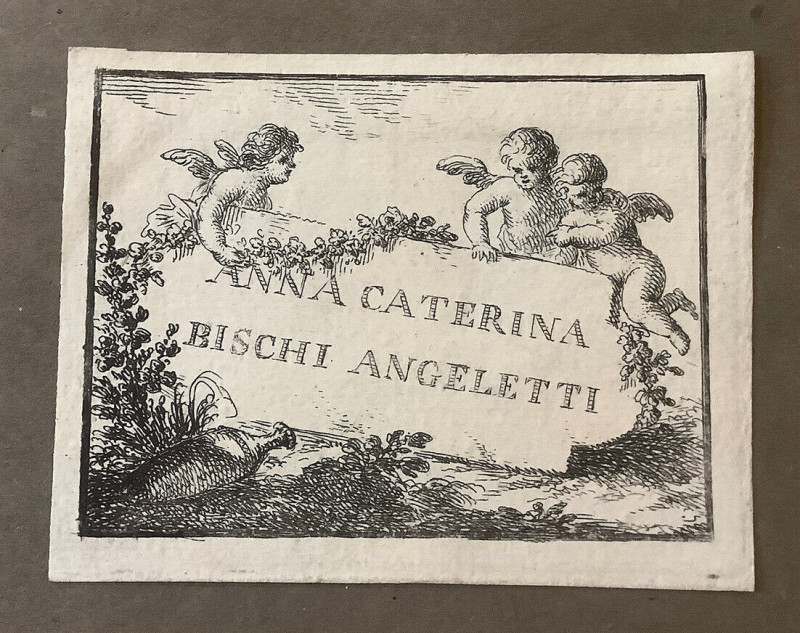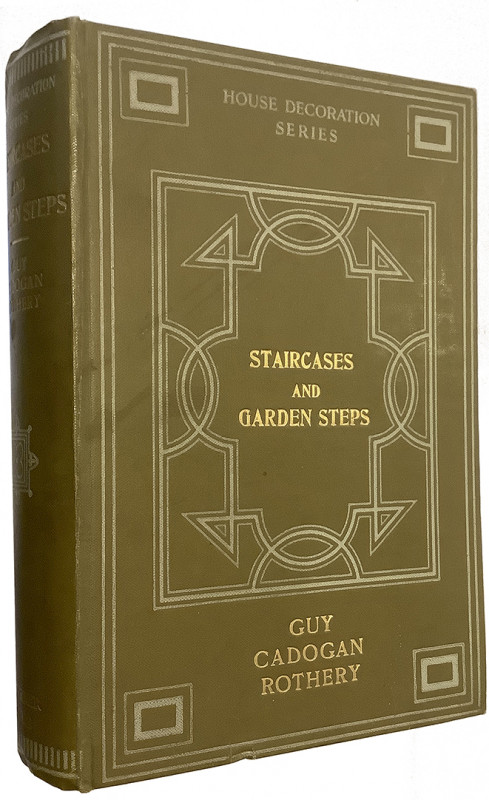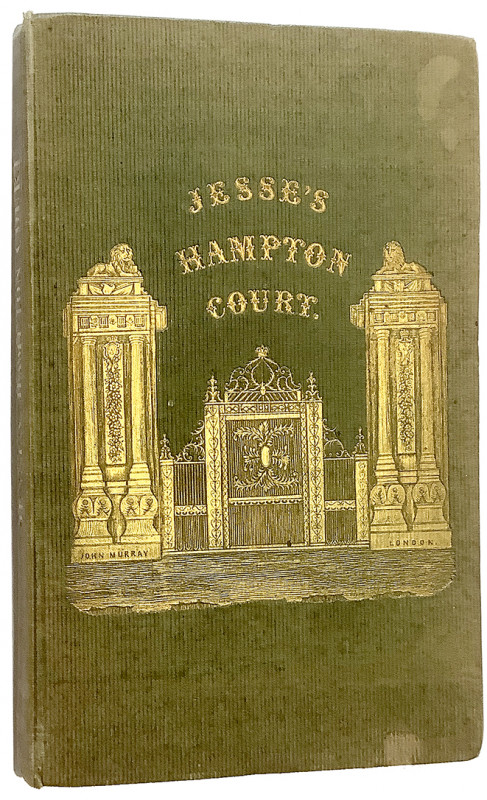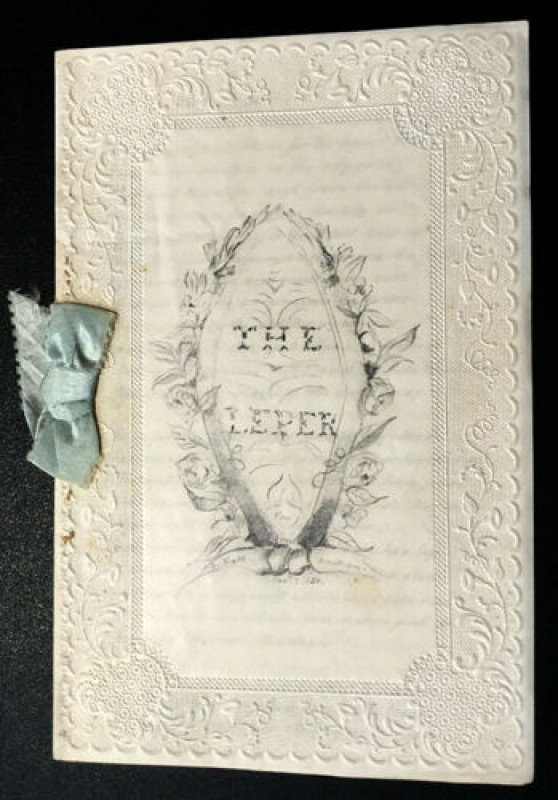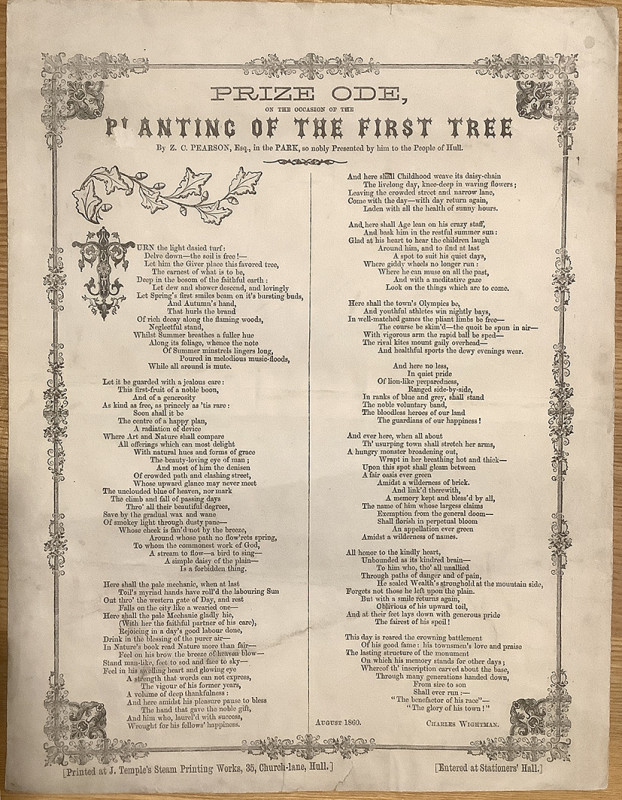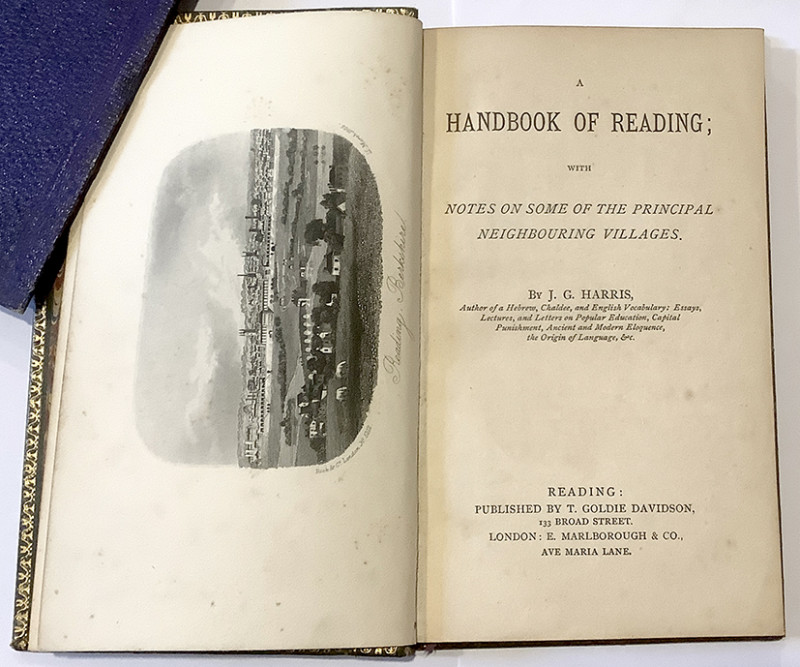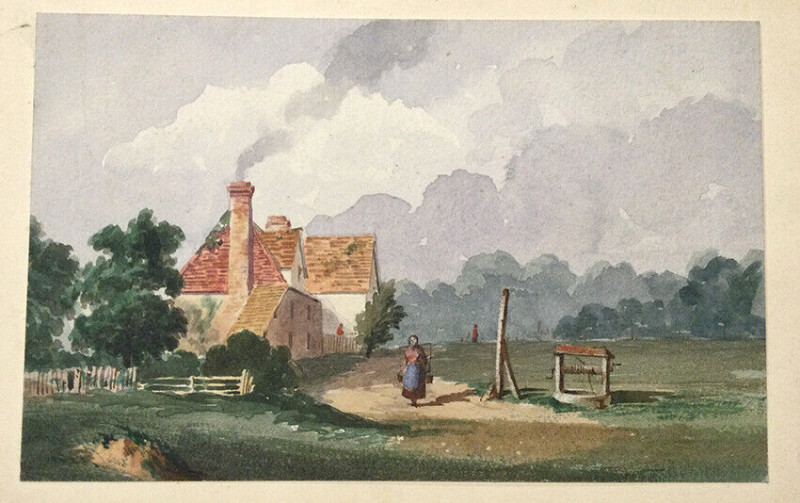1837 - Rudiments of Conchology
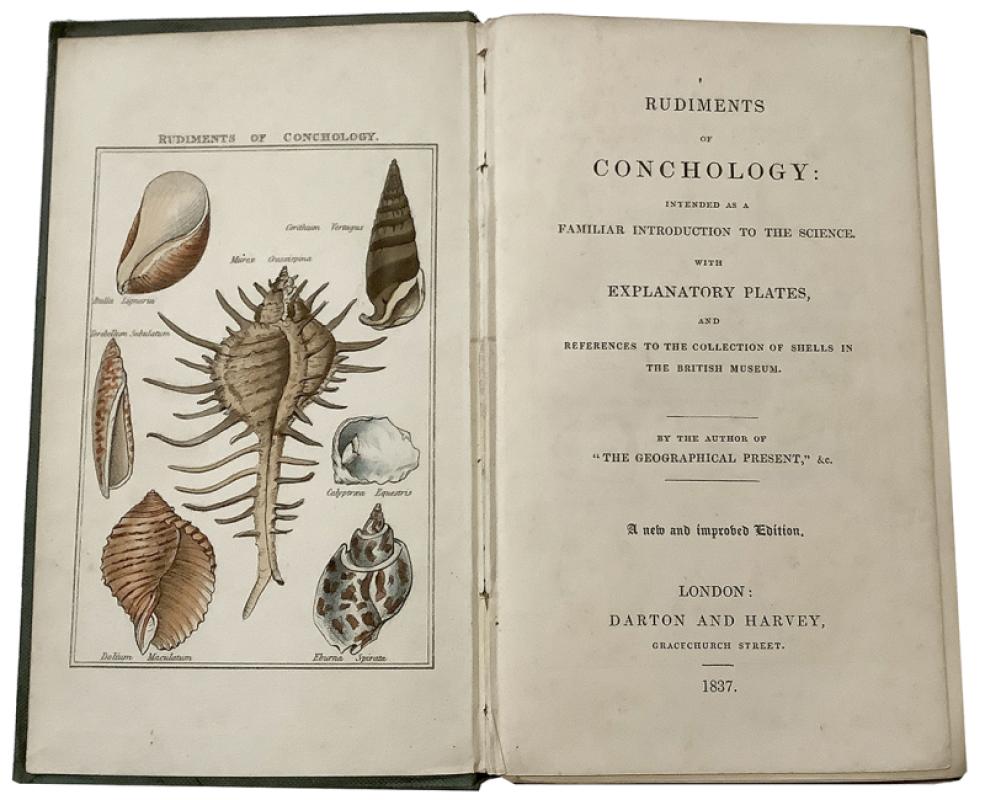
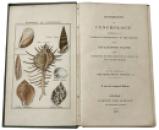
Book Description
[VENNING, Mary Anne]. Rudiments of Conchology: intended as a familiar introduction to the science. With explanatory plates, and references to the collection of shells in the British Museum. A new and improved edition. 112pp., ten hand-coloured plates (including the frontispiece), some highlighted with gum arabic. Original blind stamped cloth, with gilt lettering to the spine. Some wear to the head and tail of the spine, and contents a little loose in the binding. Contents clean and fresh. Ownership name of Mary Ann Oxbon[???], 1844 on the end-paper.
12mo. Darton & Harvey. 1837.
~ A charming conchological guide for children written in the form of an instructive dialogue between a father and his two children. It is written by the little-known female author - Mary Anne Venning. Her best known work is probably 'The Geographical Present' and she wrote a number of other works for children with a scientific theme. She follows the same style as other female authors of the time eg Elizabeth Fitton, Jane Marcet, by using dialogue between a teacher or parent and a child or children to convey factual information. There are several references to Pacific shells from Australia, New Zealand and California, and she notes her sources as being, The Conchology of Lamarck, Burrow’s Elements of Conchology, and “other introductory treatises.” This demonstrates her conversance with the scientific arguments of her day.
“Like her early-nineteenth-century contemporary Priscilla Wakefield, Venning seems to have been a woman who channelled her interest in science into a socially acceptable career of writing for the young. While reconstructing Venning’s feelings about her work is difficult, given the few, bare historical facts known about her, her work can be framed as subject to social constraints that would have blocked a scientific career but would have presented no such obstacles to scientific pursuits directed toward a pedagogical purpose. Early in her writing career, Venning learned the importance of framing her work in the literary marketplace. Her early text Simple Pleasures, Designed for Young Persons above Twelve Years of Age (1811), a guide for young people on their moral and social development, was dismissed as simultaneously derivative yet also dangerously transgressive in an issue of Monthly Review of that year, which stated,
The fair author has composed it according to the plans and hints contained in Mr. Edgeworth’s book on ‘Practical Education’: but she carries his system too far when she describes a girl who receives exactly the same education as her brother, and is afterward taken into partnership with him, and made a clerk in her father’s counting house!
The writer of this review emphasizes that a woman’s education should polish her for the private sphere rather than provide her with the skills for the public workplace. To that end, it is also significant that the reviewer credits Richard Edgeworth, not Maria, as the author of Practical Education. Though one cannot know the degree to which such views may have influenced Venning, it is striking that her future body of work shifted to a focus on adapting scientific theories for young readers, an occupation in keeping with socially acceptable womanly duties but still insistent upon interpreting and remarking on important scientific conclusions.”
ref: The Dysfunctional “Family of Man” - Mary Anne Venning and Barbara Hofland Classify Human Races in Pre-Darwinian Primers. Megan A. Norcia, 2010.
Author
Venning, Mary Anne
Date
1837
Friends of the PBFA
For £10 get free entry to our fairs, updates from the PBFA and more.
Please email info@pbfa.org for more information
